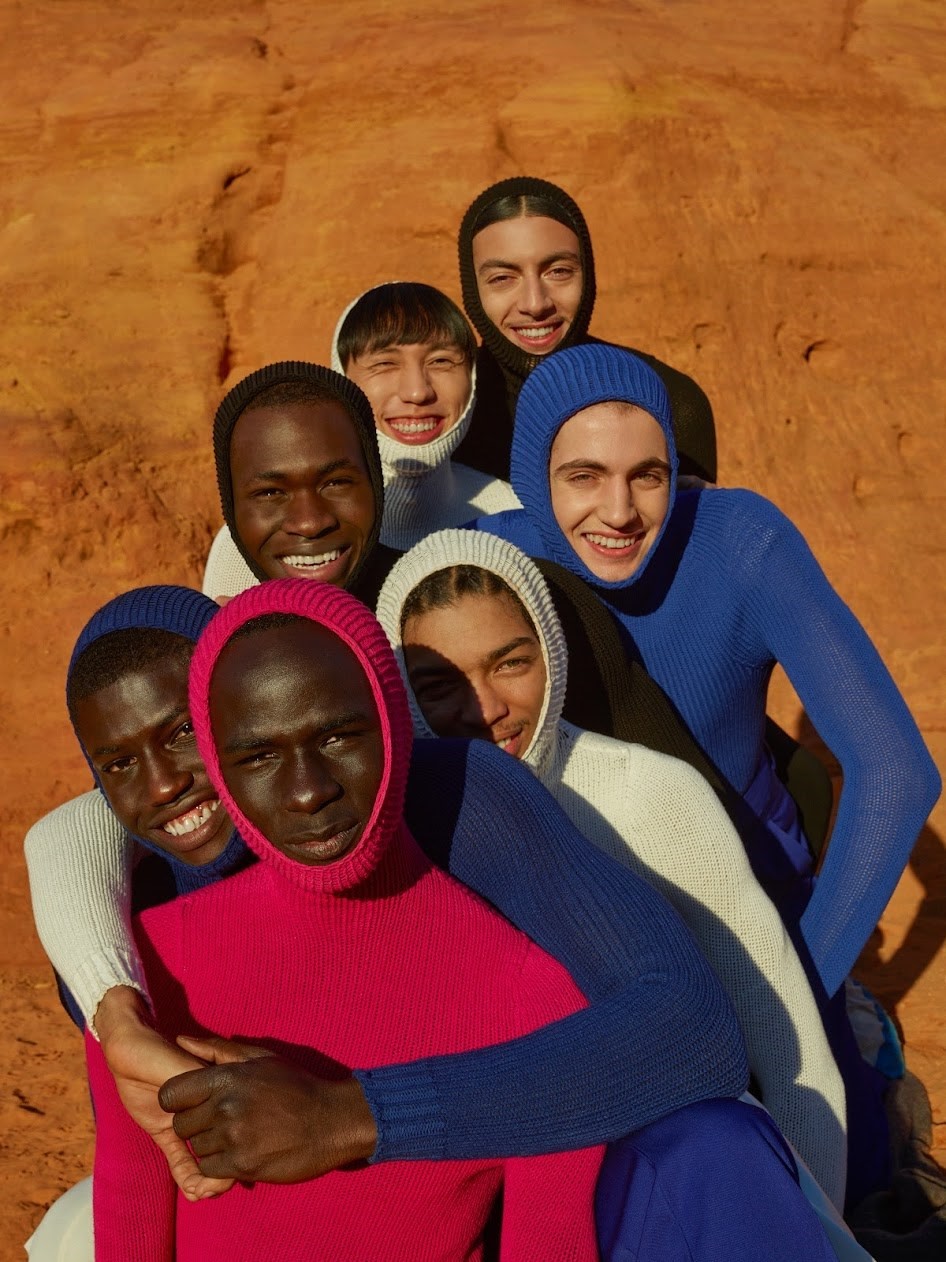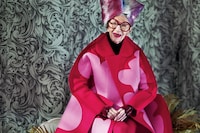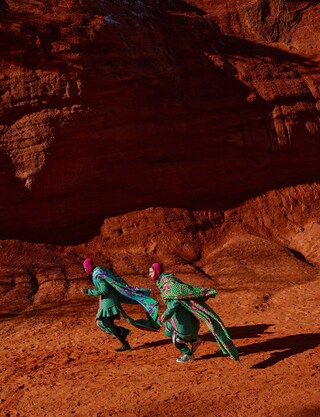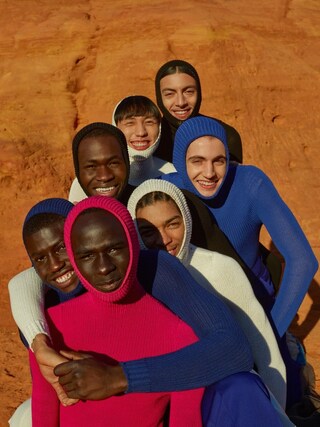Taken from the spring 2022 issue of Dazed. You can buy a copy of our latest issue here. 100% of the proceeds from the sale of it will be donated to @refugees, The UN Refugee Agency
When Virgil Abloh died in late November 2021, much of the international outpouring of grief focused on his creative mind. He was one of his generation’s great innovators, a civil engineering undergraduate from Chicago who conquered the heights of luxury fashion and broke down barriers for other Black creatives in the process. But what people didn’t talk about, at least not nearly as much, was his right brain – his ability to fuse strategy with creativity, to look at ideas as bricks to shuffle around, be replaced, thrown out and reordered. In many respects, his ability to consciously confound narratives became more important to his designs, or his DJ sets, than his cerebral shades: architecture informed his solo Off-White designs; streetwear was treated as a luxury item; handbags were treated as art (like his adaptation of Caravaggio’s altarpiece “The Entombment of Christ”), and clothing like wall hangings.
In the end, though his curriculum vitae spanned fashion, art, architecture and music, what he will be remembered for most, perhaps, is his refusal to be cornered by any one of these categories. By blending universes and smudging the creative canvas, he became a bridge between hypebeasts and these gilded industries: the ultimate multi-hyphenate, Virgil took on disparate fields under the assumption that all visual realms could be bettered with clear vision and intention. In 2018, Virgil Abloh penned a set of strategic hacks that, if followed, he believed could help lead us down untold creative pathways. In ode to the late fashion trailblazer’s genius, and his own journey across geographies both real and virtual, we asked four collectives touched by Abloh’s vision to pick a code from the pack – and tell us what it means to them.
Similar to Brian Eno, who devised his own strategies to spark brainwaves to break creative blocks (some of which were distilled into his 1975 card game, Oblique Strategies), Virgil lived by cheat codes. He first shared these at Harvard during an OFF-CAMPUS workshop in 2017, and the following year they were included in a book entitled Insert Complicated Title Here, published by the university’s School of Design. He laid out 10 commandments for the next generation of visionaries as easy-to-follow advice he would have wanted to hear as a student, from a self-enforced editing process called the ‘three per cent rule’ to a philosophy he dubbed ‘Readymade’, the notion that nothing is new and everything’s a remix – life as a DJ set. “I wish that[...] one person would have given me one ounce of advice that wasn’t: the rest of your career will be an uphill battle,” he once said. “But instead: There are all these shortcuts that you can take.”
In conflating creativity with brick-building, he saw his art as the result of a wonderful process of collaboration. In his ability to find like minds across the globe, to reject geography, time zones and the physical and embrace the magic of the cloud, he kick-started fledgling careers, platformed intersectional conversations daily, and forged untrodden paths. Here, four Virgil-affiliated collaborators and creative collectives pick a cheat code from his set and explore how these rules and practices helped them find their own way forward.

BONE SODA
The cheat: 3% Rule
Made up of five music obsessives and former Boiler Room employees – Skinny Macho, Truce, Robyn, Diogo and Tommy – Bone Soda is a collective-cum-creative agency and label, who first bonded with Abloh over their shared love of music. This spark resulted in a DJ collaboration with the designer for a London Fashion Week party in Brixton in September 2021. Bone Soda have an instinctual understanding of British youth culture, and their work savvily and hilariously breaks down the barriers between provocative marketing and live events. (Case in point: just for fun, last year they released a collection of bongs, stash pots and grinders endorsed by post-grunge singer Beabadoobee.)
The big lesson they retained from their time together relates back to Virgil’s cheat code, the three per cent approach. “Whereby,” asserted Abloh, “a creative only has to add a three per cent tweak to a pre-existing concept in order to generate a cultural contribution deemed innovative – for instance, a DJ only needs to make small edits to innovate a song. Likewise, a designer would only need to add holes to an iconic handbag to leave his mark.”
“On one hand it feels like everything’s the same. I wanna see something different to keep it fresh. But as long as you’re bringing something different to the table then you’re saying, ‘I like this but it could be better’ or, ‘If it was just done this way then it would have an impact.’ That’s his three per cent rule. Some things are iconic already, you just wanna upgrade it to give it a little bit of oomph.
This is how Virgil worked across many disciplines. You could never box him in – any time you said he was a designer then he was an artist, or a DJ, or a producer. He was making and updating stuff all the time. That’s similar to us because we don’t do any one thing, we do different things. That’s what drew us to each other. It’s like we all wanna do stuff that we enjoy, that breaks you out of the box and breaks free from the shackles of what you’re supposedly meant to do, right? He was always like, ‘Stop talking about stuff and just do it, why are you waiting around?’ My man didn’t rest. He had this relentless drive. He was always on his phone, or on his laptop doing decks, making PDFs.
I’m working on something where I’m paying homage to something that is already out there. We’re making a set of headphones with a Danish company called AIAIAI, but we’re changing them slightly by updating it with some references. It’s a return to wired headphones and the old-school generation; the colourway is a reference to something that’s come before, too.” – Skinny Macho, Bone Soda

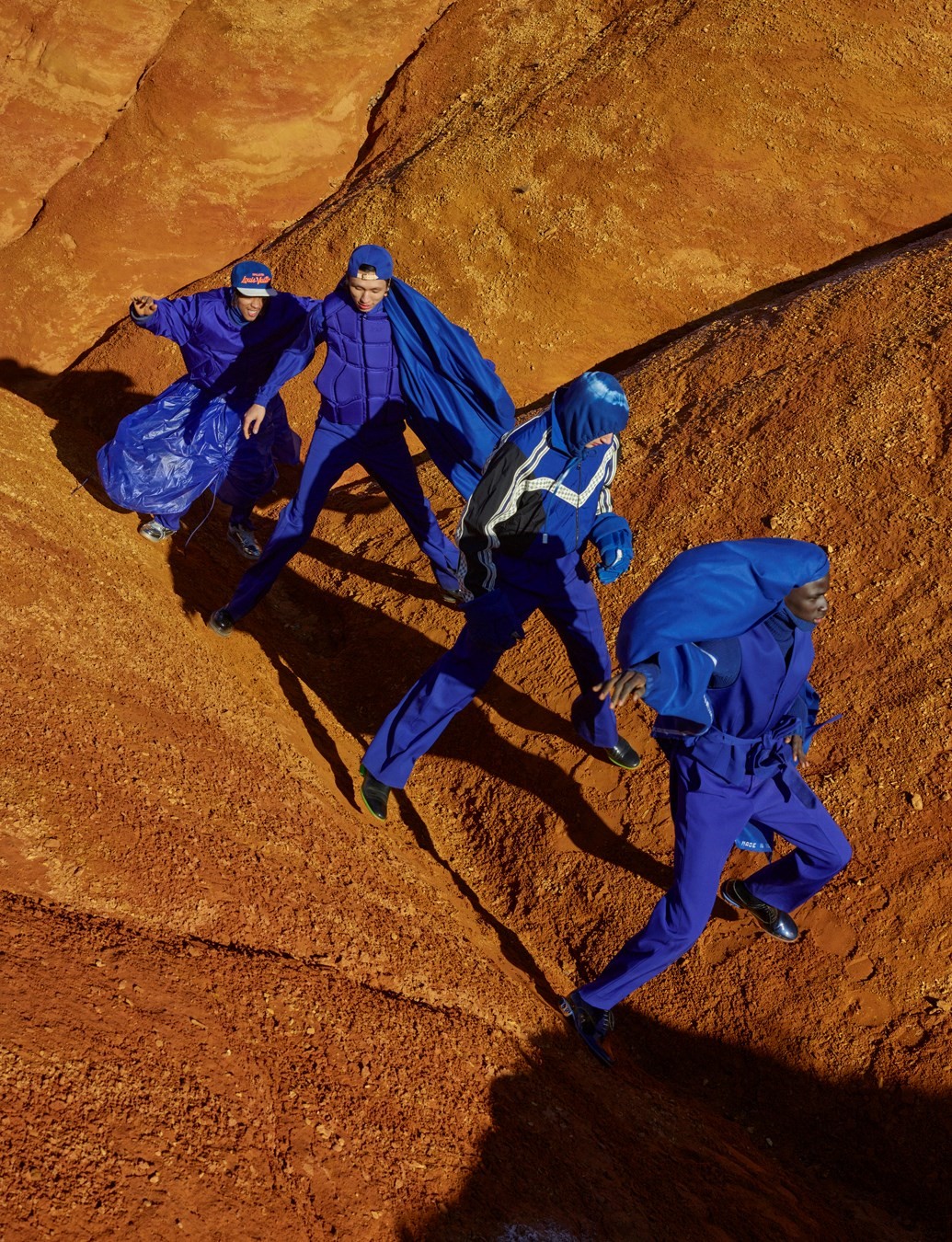
ALASKA ALASKA
The cheat: Work in Progress
Abloh founded the Black-led, research-based design and creative studio Alaska Alaska in London with the intention of building a multidisciplinary space and a vehicle that would allow him to formalise his work beyond fashion. The team comprises designers Tawanda Chiweshe, Or Gal, Klara Zepp and Francisco Gaspar, who for a recent project created limited-edition chairs made from three core materials: corrugated cardboard, vinyl tape and a plastic pouch.
The collection’s design motifs ranged from retro afro hair treatment ads to a blue vinyl-taped edition inscribed with a phrase that rose in popularity with Portugal’s 1974 military coup as the country fought for democracy. Like Virgil’s anti-perfectionist cheat code ‘Work in Progress’, the chairs appeared unfinished, unbalanced and off-centre. “Once I realised it’s OK not to be a perfectionist, I could suddenly do a million things at once and still go to sleep at night,” Virgil wrote. “That’s important. If I’m trying to be a perfectionist, then I’m not thinking anymore. It’s important to trust your hand and your brain to tell you when something’s finished. And then you can post-rationalise.”
“This cheat code is part and parcel of the practice. As somebody who was as prolific as he was, he really was about trying to understand intention. That’s how you crystalise what you’re doing and what you’re doing it for.
He always wanted to be inclusive and meet people where they are. He was always talking about being a tourist versus a purist. What he meant by that is that there is a difference between someone who knows their shit and is a potential art snob, who stays sacred to general design codes and art history, and a person who is trying to enter a space for the first time and understand it, someone who is willing to break rules. He was always holding those things in juxtaposition, which, if you want to be purist about it, has its roots in deconstructivism. He was really just about using various techniques to speak to both sides and using his position as a generalist to show what can be done and what spaces can be occupied.
Working on the Nike Ten [footwear project] was a masterclass at engaging with people on a mass level. You can see remnants of his thinking; you bring people in. It’s about not being precious with ideas, creating an environment where you have the capacity to vocalise a bad idea, to enable conversation instead of internally thinking through something. That allows you to progress, to push concepts forward and sort of correct it so that you can start the journey and actually produce something that is a good idea.” – Tawanda Chiweshe, Alaska Alaska

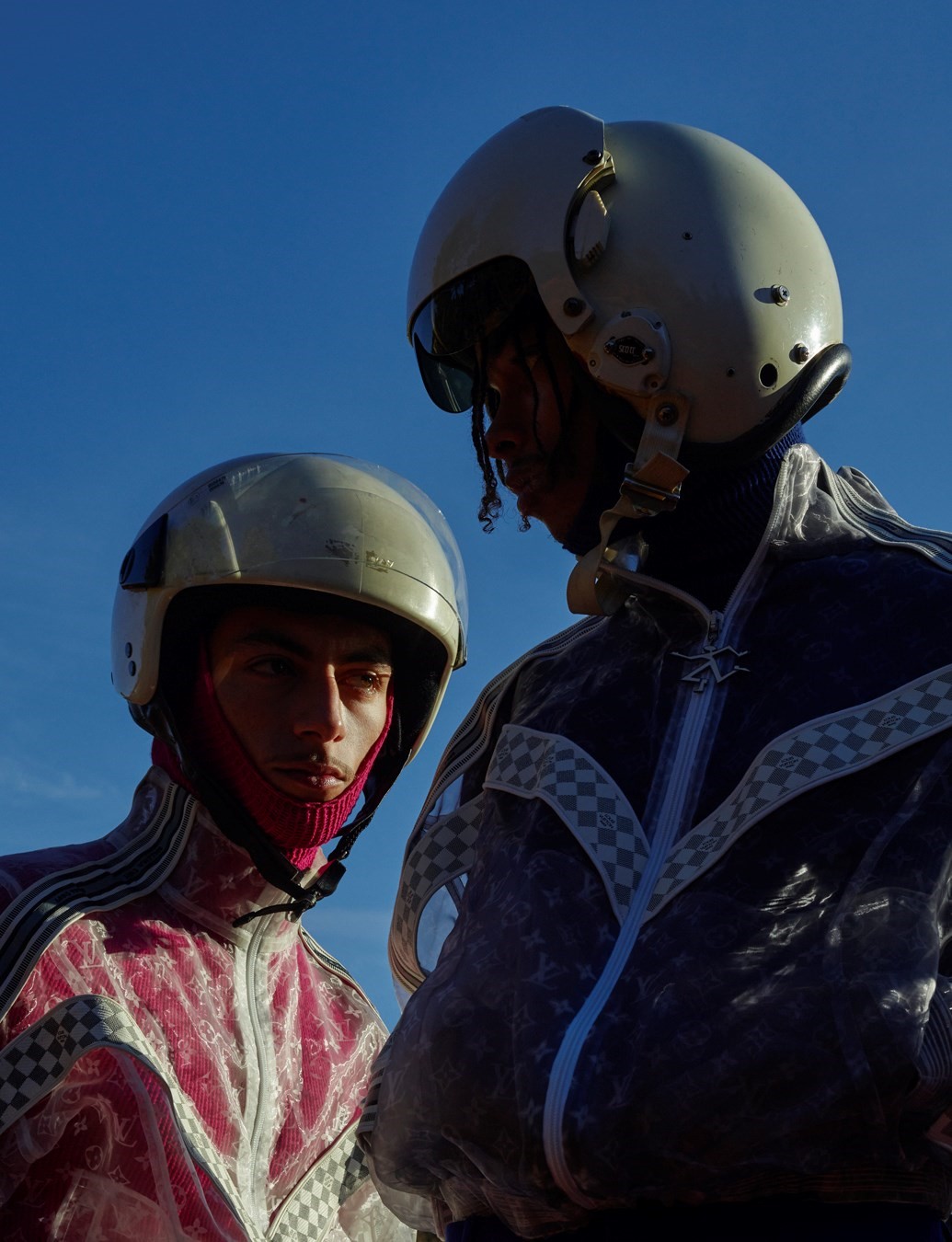
SURF GHANA
The cheat: Readymade
Sandy Alibo first got into surfing, skateboarding and BMX while working at a sports store in France. Slowly, her passion began to take the shape of event organising with a cause, to connect sports-loving youth communities across the globe. Her first trip to Ghana was aimed at familiarising herself with the local surf culture, but she quickly fell in love with the country and decided to stay and develop her own projects locally.
One of Virgil’s mantras was that creatives should embrace new ideas that are based on recognisable parts. After stumbling upon a Vogue article in 2017 detailing Alibo’s plans to turbocharge skate culture in Ghana, Abloh – a skate fanatic himself – reached out to her via Instagram. They both recognised that the west African country’s fragmented scene lacked the support and infrastructures of European skating subcultures. In fact, Ghana didn’t even have a skate park. Since their first encounter, Abloh and Alibo’s newly founded Surf Ghana – a creative, community-focused NGO promoting board sports across Ghana – worked to embolden and galvanise the country’s growing subcultures. To begin with, by building its first park, and then by establishing an ecosystem for a new generation of west African skaters. An on-site skate shop and wifi cafe are currently being finalised – the aim is to create a hub for creatives and combat the lack of access to cheap and free internet to open up the community.
“Virgil was positivity – he always tried to push people and would never really highlight anything negative in your project. Now I am always looking for a yes with everything that I’m doing. If one door closes, I’ll make sure I’m trying to open another one. In 2017, the community was small and not well organised. The priority was to take what I’d learned elsewhere and show the world that we could grow a community, reach out to more people and make sure that we involve more natives in the project as well as the diaspora and travellers. Then, in 2020, I pitched the skate park idea to him. It felt like the right moment, and we involved other brands like Daily Paper, as well as architects from Copenhagen and Accra. It was already a bigger conversation than just skateboarders. It was like, ‘How can we create a skatepark which is more of a recreational centre and a safe space for creativity?’ Having more people and collaborators on board seduced him and he said yes.
Doing something new in Ghana, you need to be passionate first of all, because there’s no access to a network or a budget. But Virgil always tried to push people. He was a skateboarder, so when we were pitching the project, he was simply taking something he already knew and bringing it to Ghana. I was able to introduce skateboarding, the sport, the art and the culture in Ghana and convince brands who aren’t into skateboarding to follow our adventure. We worked with Vans, who had worked on a skatepark before, but most of the people had never built a skatepark. We were all willing to work together to achieve the same goal.” – Sandy Alibo, Surf Ghana
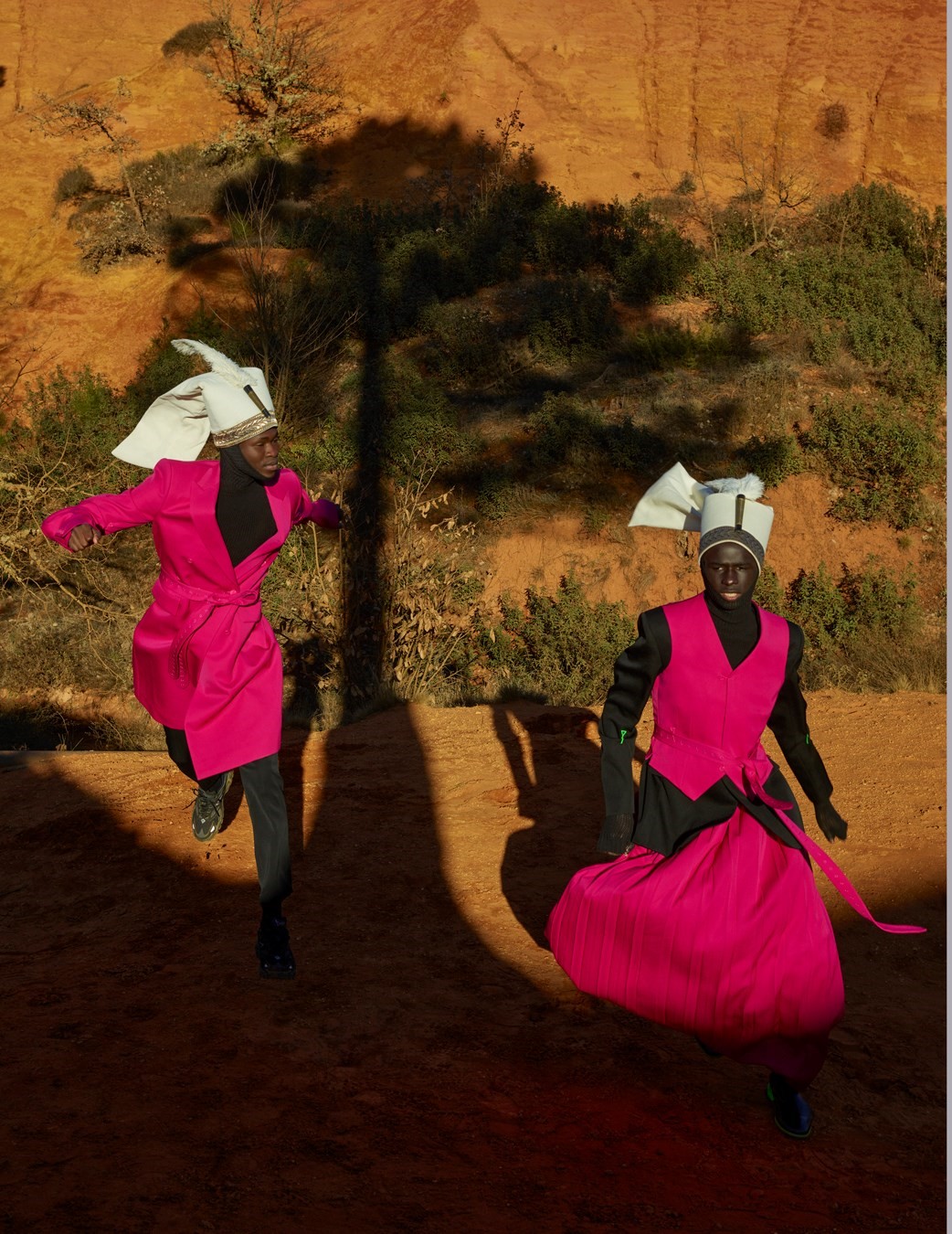
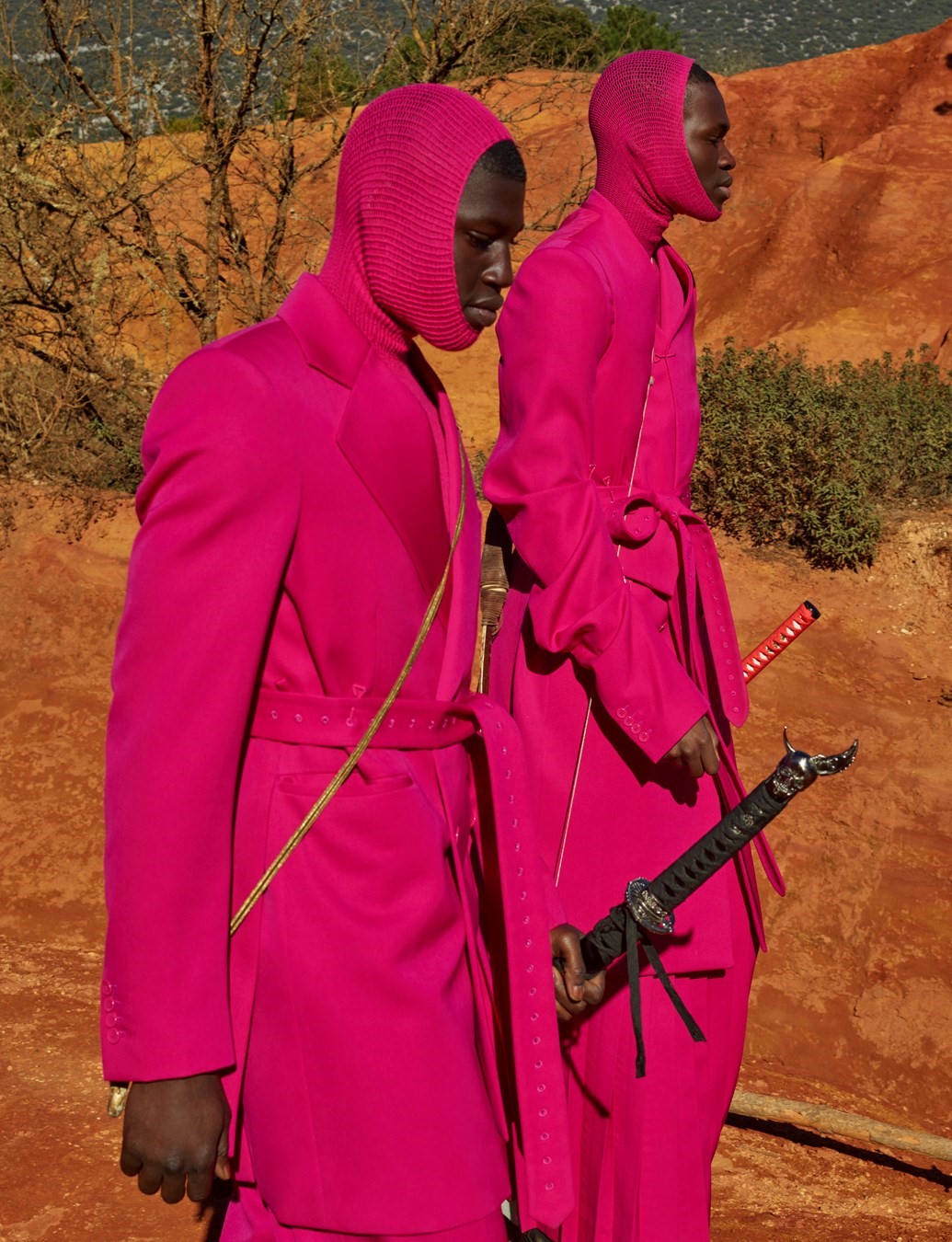
BLACK ANIME
The cheat: Question your Mentors
Headed by LA’s Kamau Furry, Black Anime is an anonymous creative collective spanning clothing design, 2D and 3D animation, and art direction. For Virgil’s debut collection showcase for Louis Vuitton – and tapping the collective fantasia we suddenly found ourselves in the moment Covid struck – Furry and co were approached to create a short film that dipped between real life and animation. “Being that the world was on hold, he wanted to build up that almost childlike positivity and hope, even beyond fashion or clothing, to make people smile and make people happy,” Furry recalls. “Something to inspire the kids.”
Furry has always felt a little caught between spaces. Born to African and Korean parents, his drawings explore the delicacies of race and optics in America today. “The plight of being Black in America has always been like an anime,” he says. “It’s a fusion of worlds.” He latches on to Virgil’s cheat code, ‘Question Your Mentors’, and his infinitely questioning spirit.
“I like Virgil’s quote: ‘You don’t even realise that the doorknob is designed until it’s broken and you see what’s inside it and see how it works – or didn’t work.’ I think it’s pretty amazing to question your mentors. He kept us in a mode where we had to keep asking questions. There was a lot of communication going on – that was the number-one Virgil status, you have to ask the questions in order to solve the problems. That’s really what it became, a lot of problem-solving, to see how all the ins and outs of these ideas work. It’s insane, because a lot of it is creativity, but a lot of it is also communication design, and just getting your point across to the next person so it can be executed.
It was like bootcamp! Everything was very fast-paced. When I started working with Virgil, everyone was like, ‘Now you’re in Virgil’s world, nothing is off the table, everything is possible, and be ready to be up for that 3am WhatsApp.’ When we were doing 2D animation, we would have set creative meetings, we’d have Zooms to just see what was possible, throw ideas out, compress what we needed to compress. Whenever we’d send him some work he’d get back to us like, ‘We need to change this, and this – this needs to change to blue, or red.’ There are a billion WhatsApp screenshots I have from him. His idea was to team up someone very experienced with someone not so experienced. I think when Virgil said to get in tune with your 17-year-old self, he was saying that you should never be arrogant with ideas. If you came up with a better idea, it was always an ‘Aha!’ moment – like, ‘Thank you, this is amazing – let’s keep building on that.’ I think that’s why he was able to work with so many people: it was fun and you wanted to spit out an idea, whether it was good or bad. If it worked, the idea would move to the top. When you are working with someone more experienced, they can bring your idea further than you could have imagined.” – Kamau Furry, Black Anime
Hair OLIVIER SCHAWALDER at BRYANT ARTISTS, make-up MIN KIM at STREETERS using NARS, models MALICK BODIAN at SUCCESS MODELS, ELYAS POLAT at PREMIUM MODELS, SOLAL ZAOUI and ISMAEL SAVANE at 16 PARIS, OMARI PHIPPS at PREMIER, YUUKI TANG at THE CLAW, OMAR SESAY at ELITE, styling assistants MARINE GABAUT, GLEN MBAN, hair assistant DAMIEN LACOUSSADE, make-up assistant JIEYU WANG, digital operator THOMAS JEZEQUEL at SHERIFF PROJECTS, production PRODUCING LOVE, casting MISCHA NOTCUTT at 11 CASTING
